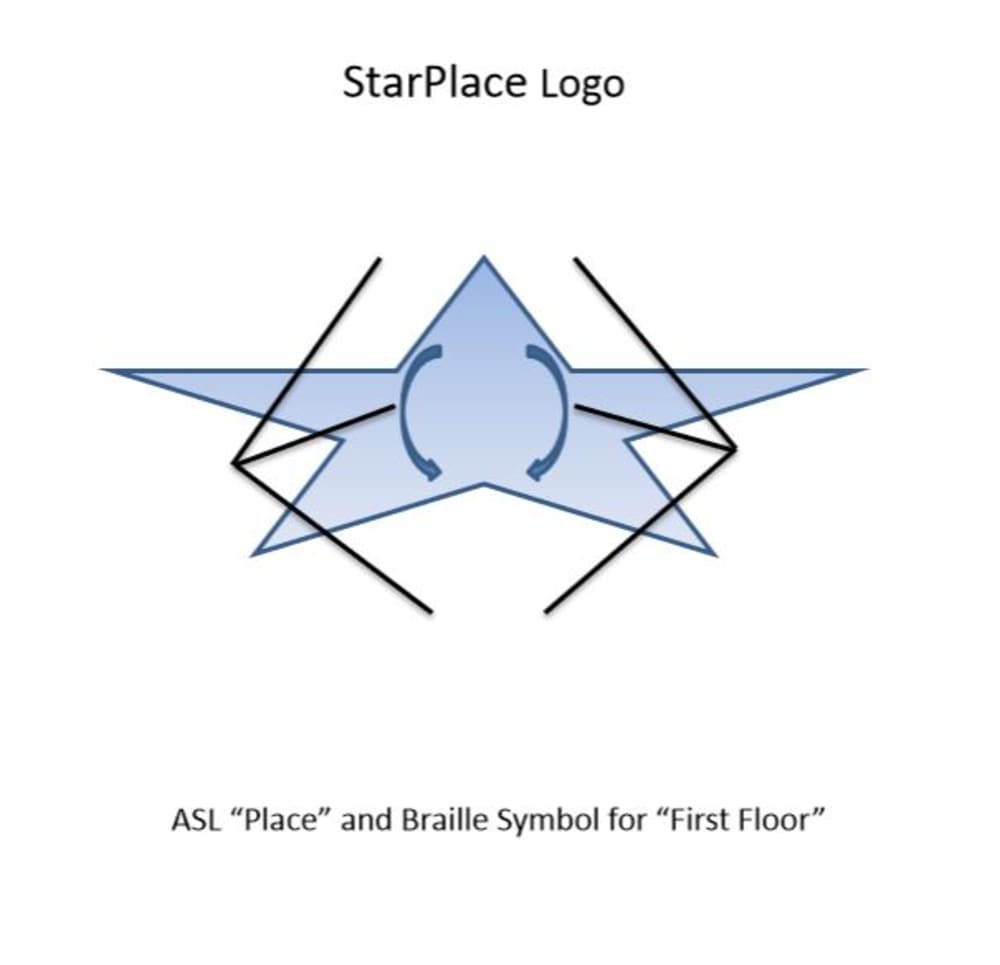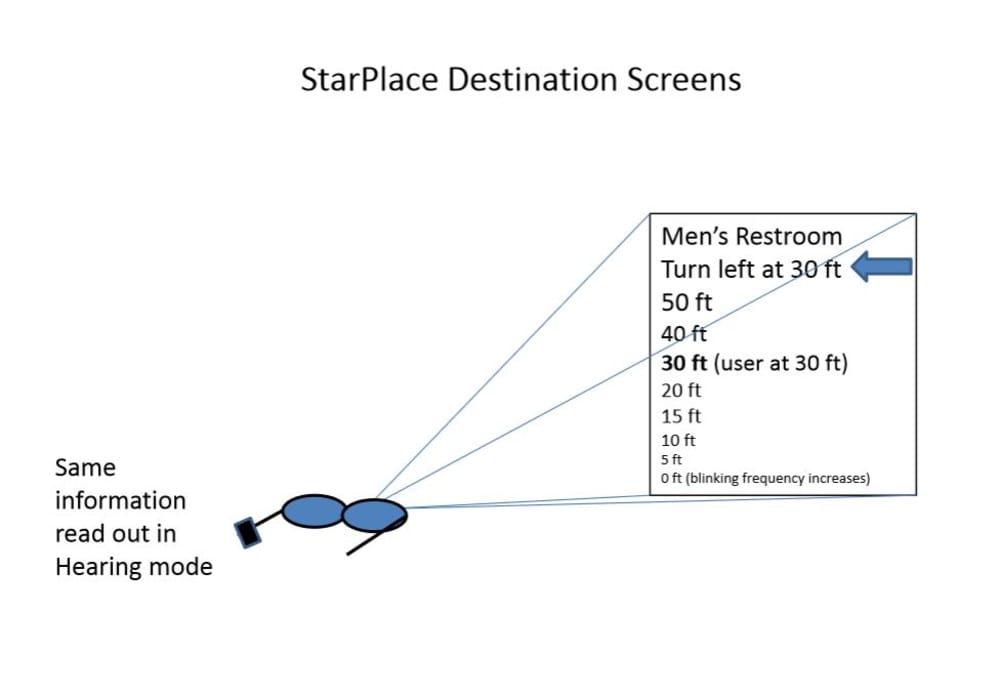A systems approach aids the visually or hearing impaired via Google Glass or other Heads Up Display (HUD), WiFi, and GPS to identify points of interest in buildings or venues, called Locations. Glass with an android phone has features which allow hands-free or touch pad to control access to the system. Operates in two modes, Hearing (user can hear) and Visual (user can see). Both modes identify Destinations such as: entrance, lobby, North entrance, emergency exit, men’s, women’s, handicapped, family restrooms (and handicapped stalls within), water fountains, stairs, elevators, floor indicators, halls and major office numbers (100, 5400, etc) and keep out zones (KOZs - construction, wet floors, etc)
For both modes, a Pointer gives directions via earpiece and on screen, triangulating the orientation of the user referenced to North and basing a change in direction or turning in place via Glass or HUD accelerometers already incorporated. Access to specific Destination is via taps on touch pad to scroll through destinations; head nods are not recommended to avoid having the Glass fly off then needing to retrieve it. Each destination would enunciate, “Men’s Restroom – twenty feet, fifteen feet, etc,” a visual countdown for hearing mode and voice countdown for visual mode. Mode could be enabled to automatically enunciate all destinations, or groups, such as restrooms, entrances, emergency exits, etc, or to exclude some (men do not need the woman’s restroom).
System Location set up includes input of unique hall and room numbers, identification of the North entrance, and maintenance of KOZs. For construction, the System Location inputs GPS coordinates. For wet floors, a WiFi-transmitter mounted on a Wet floor sign broadcasts a simple verbal message, “Caution – Wet Floor” and the Glass/HUD blinks the display over a narrow area. This system would not give specific locations of individuals for security, though enabling such data could be a system preference.
In Hearing mode, prism system need not be enabled which saves power.
A universal convention for Locations needs consensus for all Locations everywhere, especially major locations, such as lobbies, entrances, restrooms and KOZs. A downloadable map would be available that gives these Destinations to aid in preparation to visit these Locations and would be available via QR code. Glass/HUD arranges to display the result and can read off Destinations. Major Destinations within each Location could be public knowledge. For security, more specific Destinations would not be available by map.
See proposed universal logo for Locations that use this system. A unique tone sequence should sound when the user nears a Location.
Could use in active mode as above or passive, where an RFID interrogator on the Android device, reads RFID tags, and sends voice direction to the earpiece. These would be useful for smaller buildings or venues that will not provide WiFi.
Because Glass has been banned from some areas, note that some wearable technologies transmit from below the field of view and have the advantage that the electronics and battery pack can be hidden in a pocket.
Like this entry?
-
About the Entrant
- Name:Kevin Moore, Pe
- Type of entry:individual
- Patent status:none





